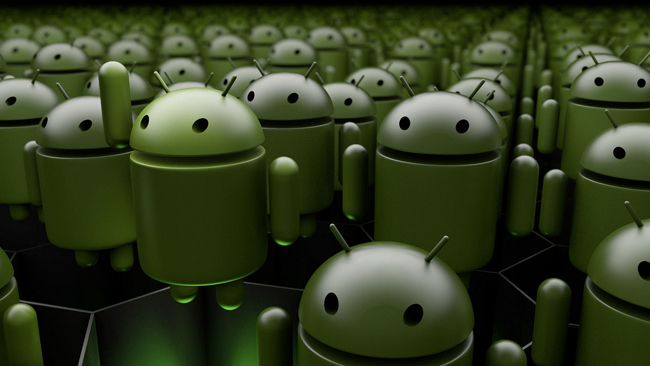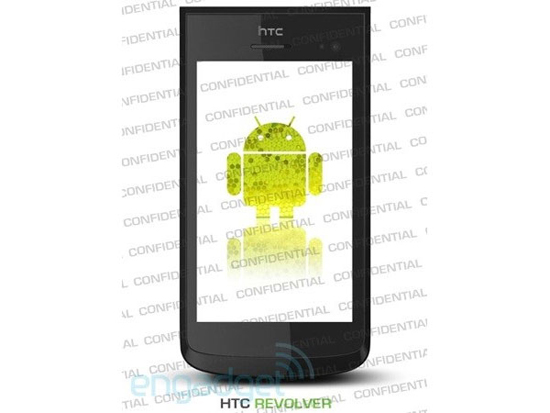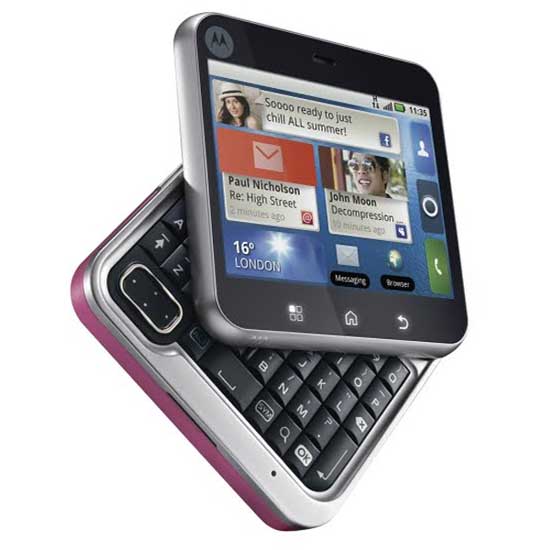Side hustles are no longer optional in South Africa. With food inflation still above 8 percent and electricity, transport and mobile data costs climbing…
Android phones that will enhance your love life

 In August of 2010, OkCupid.com released some vital industry statistics: iPhone users were having more sex than users of any other smartphone brand. BlackBerry users were in second place, and then in third – or dead last if you prefer – were the fandroids.
In August of 2010, OkCupid.com released some vital industry statistics: iPhone users were having more sex than users of any other smartphone brand. BlackBerry users were in second place, and then in third – or dead last if you prefer – were the fandroids.
OkCupid extracted EXIF data from photographs to figure out which smartphones 9 785 of their 30-something members were using, and crossed it with all kinds of user behaviors and found data on the number of sexual partners for each major smartphone platform.
At the time the research was conducted, male and female iPhone users had an average of 10 and 12 sexual partners, respectively. BlackBerry users had an average of 8 while Android users had a mere 6.
Three things spring to mind.
First, the research was conducted in August 2010 at a time when Android had not yet reached its full sales potential. By the end of 2010, research company Gartner’s estimates put global Android sales at 67.2-million units, ahead of iPhones iOS, which sold 46 million units. Research in Motion succeeded in moving 47.6-million BlackBerry OS based units and therefore remains in second place for the purpose of this exercise.
I therefore propose that there were simply fewer Android members available for the study, thereby decreasing the likelihood of finding more prolific members to boost the average.
Secondly, the iPhone has always had one of the best smartphone cameras, and certainly the most available apps for photo editing, ensuring the best possible looking profile pictures on OkCupid.com, whereas Android cameras have been a mixed bag, with fewer photo editing applications available for the platform.
Thirdly, and most importantly, Android has been evolving. No longer a fringe indulgence of the uber geek, new apps and 14 megapixel cameras make your profile pictures look down right smouldering, Super AMOLED Plus displays serve suitors up on a clear, glass platter with 50% more sub-pixels, Gingerbread sets the mood and brings a polished look to the Android OS, and lust-worthy tech like, 3D displays and quad core (think Tegra 3) processors that reside inside sleek, high quality handsets, are part of an Android user’s everyday lexicon.
Android is now, dare I say it out loud, sexy.
I predict that not only do Android users have more sexual partners, but I challenge the peer reviewed and factual study which stated that 54% of females prefer an iPhone man.
If you needed more convincing that Android phones are becoming more desirable than their iPhone counterparts, let me (re)introduce you to some of the world’s sexiest Android devices, and help you not only find a phone you’ll love, but also increase your likelihood of finding a romantic partner, or two.
Sony Xperia Play (White)

The Xperia Play combines smartphone functionality for power users, with an immersive gaming experience for serious gamers thanks to a full physical button PlayStation controller and multi-touch touch screen. A world first, Android based, and it looks amazing in white.
LG Optimus 3D

Love it or loathe it, 3D is hot right now, and LG brings us the world’s first lenticular (glasses free 3D), smartphone. The LG Optimus 3D is the also the world’s first smartphone to have a dual-core, dual-channel and dual-memory architecture. Record 3D video and pictures in 720p or regular 2D in 1080p and output it all via HDMI to your HDTV.
Motorola Atrix 4G

The Atrix’s 960 x 540 resolution display rivals the iPhone 4, and its high speed Tegra 2 CPU and connectivity leaves the iPhone wanting but that’s not the best part. The Atrix is a laptop, set top box, desktop computer, or just plain smartphone depending on which accessories you do or don’t pair it with. Plug it into Motorola’s Webtop laptop dock, and the Atrix offers a PC experience through the dock’s full keyboard, large screen, Firefox and Linux based Webtop software. Motorola recently stated that it will “dock-enable” more of its future smartphones.
NEC Casio Mobile MEDIAS N-04C

If you’re the kind of person who likes to wear tight jeans, the MEDIAS is the phone for you. At 7.7mm thick its officially the world’s thinnest phone. Unfortunately, if you want one, which coincidentally already offers NFC functionally, you’ll have to take a trip to the land of the rising sun as it’s only being sold through Docomo, Japan for now.
“Facebook phones” INQ Cloud Touch / Q and HTC ChaCha / Salsa


If your favourite movie is The Social Network, and you’ve found profound meaning in Mark Zuckerberg’s D8 hoodie insignia, you might like to procure one of these Facebook friendly smartphones.
Firstly, the INQ touch screen Cloud Touch and QWERTY Cloud Q, has tight Facebook integration and are the first phones to use the Facebook Social Graph API, which will see all your most important Facebook content appear on your handset’s homescreen.
Secondly, HTC’s touch screen Salsa, and QWERTY ChaCha, sports a blue context-aware button, which lights up any time there’s an opportunity to share whatever you’re doing with the phone through Facebook.
Vizio Via phone

The Vizio Via phone is a gorgeous looking handset, with an even more more gorgeous Android skin, arguably on of the best a company has ever done on top of stock Android. The Via phone teams up with the Via tablet and sports consistent UIs, that match the UIs on Vizio’s bread and butter HDTVs to complete the gadget eco system. The tablet and phone can be used as remotes for Vizio’s televisions through an IR interface, and are rumoured to be some of the first mobile devices to stream Netflix, which should be good news for US and Candadian consumers.
Aigo A8 / Altek Leo

It’s a phone. No it’s a camera. With a 14 megapixel autofocus camera with a CCD sensor, xenon flash, 3x optical zoom, and support for 720p HD video recording, is the Aigo A8 a phone with a camera, or a camera with a phone? Whatever it is, it’s a world first, and it’s Android based.
Acer Iconia Smart

The Iconia Smart blurs the line between smartphone and tablet. With a gorgeous yet, unconventional 21:9, 1024 x 480-resolution display it’s a pocket buster measuring 4.8 inches diagonally.
Samsung Galaxy S II

What’s better than the world’s most popular Android phone? Version 2, for the world’s most popular Android phone. Packing Gingerbread, a Super AMOLED Plus display, an 8MP camera at the back and 2MP in the front, a gig of RAM, up to 32GB of storage and a dual-core gigahertz processor, the Galaxy S II has the original well and truly beat in every aspect.
Google Nexus S

The archetype Android device. Version 2.0. Picking up where the original Nexus One left off, the Nexus S continues the tradition of offering the purest Android experience possible. Unlike the One which was manufactured by HTC, the S, came courtesy of Samsung and was the first device to boast Gingerbread 2.3. Google’s official handsets however, always receive first dibs on the latest OS builds, with both devices now having been blessed with Gingerbread 2.3.3 builds recently.
Motorola Droid Bionic LTE 4G

What good are dual cores, if they are not made use of, optimally? Sanjay Jha, CEO of Motorola Mobility said that the Bionic’s 1GHz dual-core Tegra 2 processor will deliver 2GHz performance due to software optimisation. Combine this with high speed LTE connectivity and the Bionic becomes one lofty yet enticing promise indeed. The Bionic is one of 4 phones including the HTC Thunderbolt, LG Revolution, and the Samsung SCH-i510 headed to Verizon’s new high speed LTE network in the US.
HTC Incredible S

Hailed as HTC’s new flagship device, the Incredible S covers the high end of HTC’s offerings, with an 8MP camera, 1GHz single-core processor – a tad surprising in today’s dual-core race – and 768MB of RAM. The Incredible has a cool feature that lets the capacitive menu buttons rotate with the screen, so that they can be either in landscape or portrait mode.
HTC Desire HD

An 800 x 480 resolution, 4.3 inch LCD display with HSPA+ connectivity, are key ingredients to an awesome web browsing experience. Fans of the legendary Sprint only Evo 4G, Windows Phone HD7, and of course the original Desire will love the Desire HD’s ample screen real estate despite it’s barely pocketable size.
HTC Revolver

If the rumours are to be believed, the Revolver will be HTC’s new flagship device, dethroning the Incredible S at the bottom end of 2011, packing a 1.2GHz dual-core processor, 8MP rear- and 3MP front-facing camera, and best of all run, Android 3.0.
Kyocera Echo

You’re looking at the world’s first Dual-Touchscreen smartphone. It supports three modes:
- Single-Screen Mode for a straight-up conventional touchscreen experience.
- Simul-Task Mode that runs two of the phone’s seven core apps concurrently, but independently on the dual displays.
- Optimized Mode with both displays supporting a single, optimized app with complementary functionality and enhanced usability.
- Tablet Mode with one application spread across both displays for a full 4.7-inch viewing area.
Sadly the Echo lacks dual core processors, something that would’ve made a lot of sense here.
Motorola Flipout

I’ve had a secret crush on the Flipout ever since it surfaced way back in the first part of 2010. Who cares about the the unimaginative specs, when you have such an imaginative design. I mean, just look at it. Despite budget cutbacks the Flipout’s unique design, 512 RAM, microSD expansion slot, and full QWERTY keyboard makes for a fun Android experience for fashion conscious geeks.
Motorola Defy

This is the phone Rambo carries, I’m sure. Shock proof and water resistant up to 1 meter under water, if you’re adventurous or your nickname happens to be “Butter Fingers”, the Defy is your new best friend. To make things even more interesting, the Defy is one of Motorola’s cheaper offerings despite packing some heat boasting a 5 megapixel autofocus camera, LED flash, 800MHz processor, and a 3.7-inch 854 x 480 display.
Umeox Apollo

Being eco conscious is sexy. If the Motorola Defy is the phone for Rambo, the solar powered Umeox Apollo is just the type of phone you might find in David Attenborough’s backpack. The Apollo isn’t exactly a high-end device and costs about $100 off-contract, but if you’ve traded in your Golf GTI for a Prius, the eco friendly, rugged, Froyo powered Apollo with built-in flashlight, might just be your thing.

